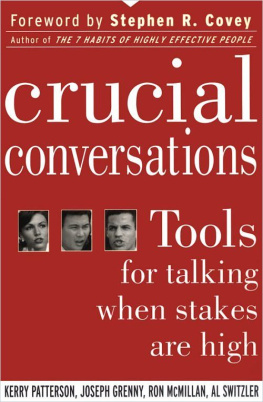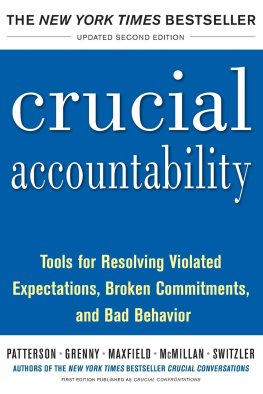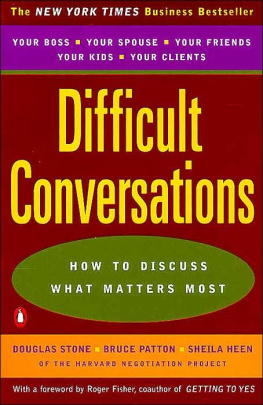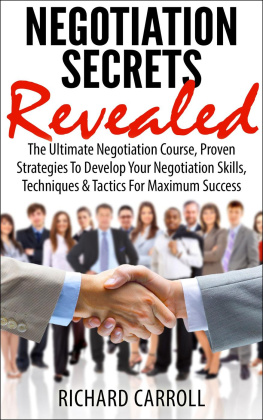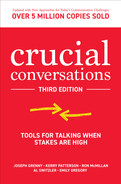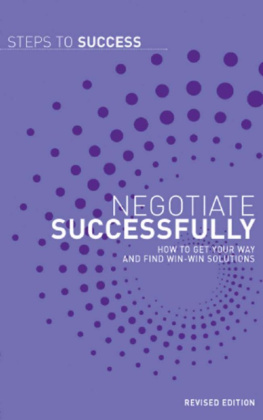Kerry Patterson - Crucial Conversations (Summary): Tools for Talking When Stakes Are High
Here you can read online Kerry Patterson - Crucial Conversations (Summary): Tools for Talking When Stakes Are High full text of the book (entire story) in english for free. Download pdf and epub, get meaning, cover and reviews about this ebook. year: 2003, publisher: getAbstract, genre: Home and family. Description of the work, (preface) as well as reviews are available. Best literature library LitArk.com created for fans of good reading and offers a wide selection of genres:
Romance novel
Science fiction
Adventure
Detective
Science
History
Home and family
Prose
Art
Politics
Computer
Non-fiction
Religion
Business
Children
Humor
Choose a favorite category and find really read worthwhile books. Enjoy immersion in the world of imagination, feel the emotions of the characters or learn something new for yourself, make an fascinating discovery.
- Book:Crucial Conversations (Summary): Tools for Talking When Stakes Are High
- Author:
- Publisher:getAbstract
- Genre:
- Year:2003
- Rating:5 / 5
- Favourites:Add to favourites
- Your mark:
Crucial Conversations (Summary): Tools for Talking When Stakes Are High: summary, description and annotation
We offer to read an annotation, description, summary or preface (depends on what the author of the book "Crucial Conversations (Summary): Tools for Talking When Stakes Are High" wrote himself). If you haven't found the necessary information about the book — write in the comments, we will try to find it.
getAbstract Summary: Get the key points from this book in less than 10 minutes.
Former U.S. President John F. Kennedy once said, Let us never negotiate out of fear. But let us never fear to negotiate. These wise words were never truer than in todays business world. Many people recoil from crucial conversations, where they have to negotiate to get ahead. But as the saying goes, In business, you dont get what you deserve, you get what you negotiate. Kerry Patterson and his team of fellow co-writers and leadership consultants describe various techniques for effective negotiation and conflict resolution in the context of important, potentially life changing conversations. Examples include talking yourself into a promotion, bringing up important information at meetings and working out problems with your spouse. Some tips will sound familiar, such as knowing what you really want and being open to alternatives. However, the book also highlights some themes that are often forgotten in negotiations, such as making it safe for others to express their true feelings and desires. The authors explain how to avoid getting forced into false either/or choices and tell you how to remain alert for unstated alternatives or possibilities. This lively book includes many examples drawn from business and personal relationships. getAbstract recommends it in particular to those who are new to negotiations and conflict resolution, though it teaches solid skills that any manager or any spouse, for that matter could benefit from mastering.
Book Publisher:
McGraw-Hill
Kerry Patterson: author's other books
Who wrote Crucial Conversations (Summary): Tools for Talking When Stakes Are High? Find out the surname, the name of the author of the book and a list of all author's works by series.

